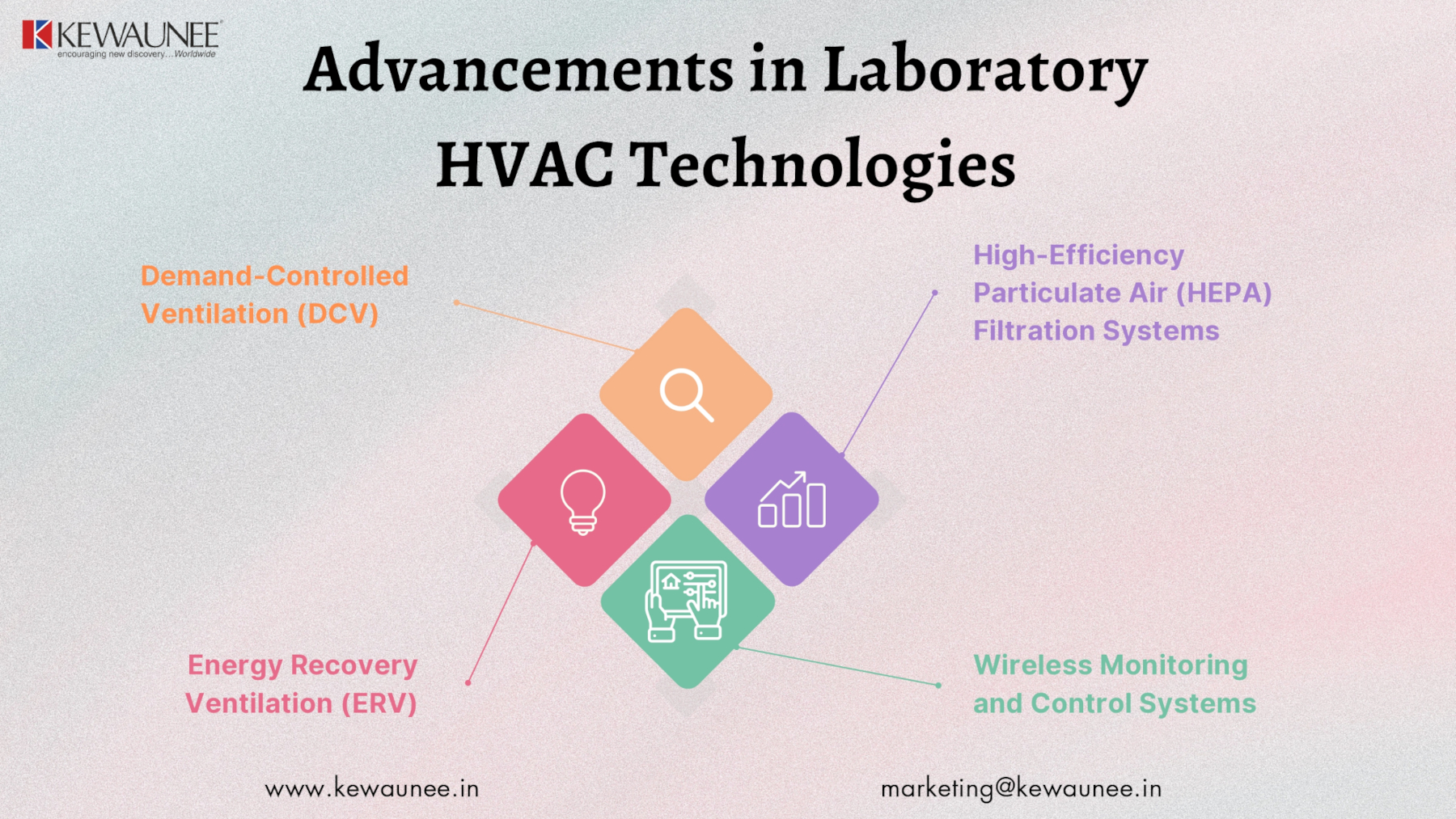Advancements in Laboratory HVAC Technologies
HVAC (heating, ventilation, and air conditioning) systems play a critical role in maintaining safe and healthy laboratory environments. These systems ensure that laboratory spaces have adequate temperature, humidity, and ventilation control to maintain optimal conditions for experiments, equipment, and personnel.
In recent years, there have been significant advancements in laboratory HVAC technologies that have improved the efficiency, safety, and performance of these systems.
In this blog, we will explore the latest advancements in laboratory HVAC technologies and their benefits.
Traditional HVAC Technologies in Laboratories
Traditional HVAC systems in laboratory settings typically consist of air handlers, ductwork, and vents that distribute conditioned air throughout the laboratory space. While these systems have been used for many years, they have several limitations.
For example, they can be costly to operate, require regular maintenance, and may not provide adequate ventilation control for laboratory activities.
Common challenges with traditional HVAC systems include issues with air distribution and filtration, temperature and humidity control, and energy efficiency.
Additionally, the design of these systems can be limiting, as they are often difficult to modify or expand to meet changing laboratory needs.
Advancements in HVAC Technologies for Laboratories
Recent advancements in laboratory HVAC technologies have addressed many of the limitations of traditional systems. These advancements include demand-controlled ventilation (DCV), high-efficiency particulate air (HEPA) filtration systems, energy recovery ventilation (ERV), laboratory airflow control systems, and wireless monitoring and control systems.
Demand-Controlled Ventilation (DCV)
DCV is a technology that adjusts ventilation rates based on real-time occupancy data, providing optimal ventilation control while reducing energy consumption. In laboratory settings, DCV systems can help maintain safe air quality while reducing energy costs.
These systems use sensors to detect occupancy levels and adjust ventilation rates accordingly. They also integrate with HVAC systems to ensure proper air distribution throughout the laboratory space.
High-Efficiency Particulate Air (HEPA) Filtration Systems
HEPA filtration systems are designed to capture particles as small as 0.3 microns, making them highly effective at removing contaminants from the air in laboratory settings. These systems use a combination of filtration and air circulation to remove contaminants and maintain clean air in the laboratory. HEPA filtration systems can be installed as part of an HVAC system or as standalone units.
Energy Recovery Ventilation (ERV)
ERV systems use heat exchangers to transfer heat and humidity between the incoming and outgoing air streams, reducing energy consumption and improving indoor air quality. These systems are particularly effective in laboratory settings, where large amounts of conditioned air are needed to maintain safe and comfortable working conditions.
Laboratory Airflow Control Systems
Laboratory airflow control systems are designed to provide precise control over laboratory airflows, ensuring that air is distributed evenly throughout the laboratory space. These systems use sensors and controls to adjust airflow rates and direction, preventing cross-contamination and maintaining optimal ventilation control.
Advanced airflow control systems can also integrate with laboratory equipment, providing customized airflows for specific experiments.
Wireless Monitoring and Control Systems
Wireless monitoring and control systems use sensors and wireless communication technology to monitor laboratory conditions in real-time. These systems can track temperature, humidity, and air quality, and can alert laboratory personnel to potential issues or deviations from set parameters.
Wireless monitoring and control systems can also integrate with HVAC systems to provide remote control and monitoring of laboratory conditions.
Future of Laboratory HVAC Technologies
As technology continues to evolve, so too will laboratory HVAC systems. One emerging trend in laboratory HVAC technologies is the use of artificial intelligence and machine learning algorithms to predict and adjust HVAC system settings based on usage patterns and environmental conditions. This can result in even greater energy efficiency and cost savings.
Other potential future trends in laboratory HVAC technologies include the use of advanced materials and coatings to improve HVAC system performance, as well as the integration of HVAC systems with other building systems, such as lighting and security.
Conclusion
In conclusion, laboratory HVAC technologies have come a long way in recent years, with many innovative advancements in traditional HVAC systems as well as the emergence of new technologies. From demand-controlled ventilation to wireless monitoring and control systems, these advancements offer a wide range of benefits including increased energy efficiency, improved indoor air quality, and greater safety and comfort for laboratory occupants.
As laboratories continue to evolve and become more specialized, it is important to keep up with the latest advancements in HVAC technologies in order to ensure the safety and productivity of lab personnel. By implementing these innovative technologies, laboratories can create a healthier, more efficient and sustainable environment for research and development.
We encourage lab managers and stakeholders to consider implementing these technologies in their facilities and work with HVAC experts to design and install the best systems for their specific needs.
Comments are closed.











